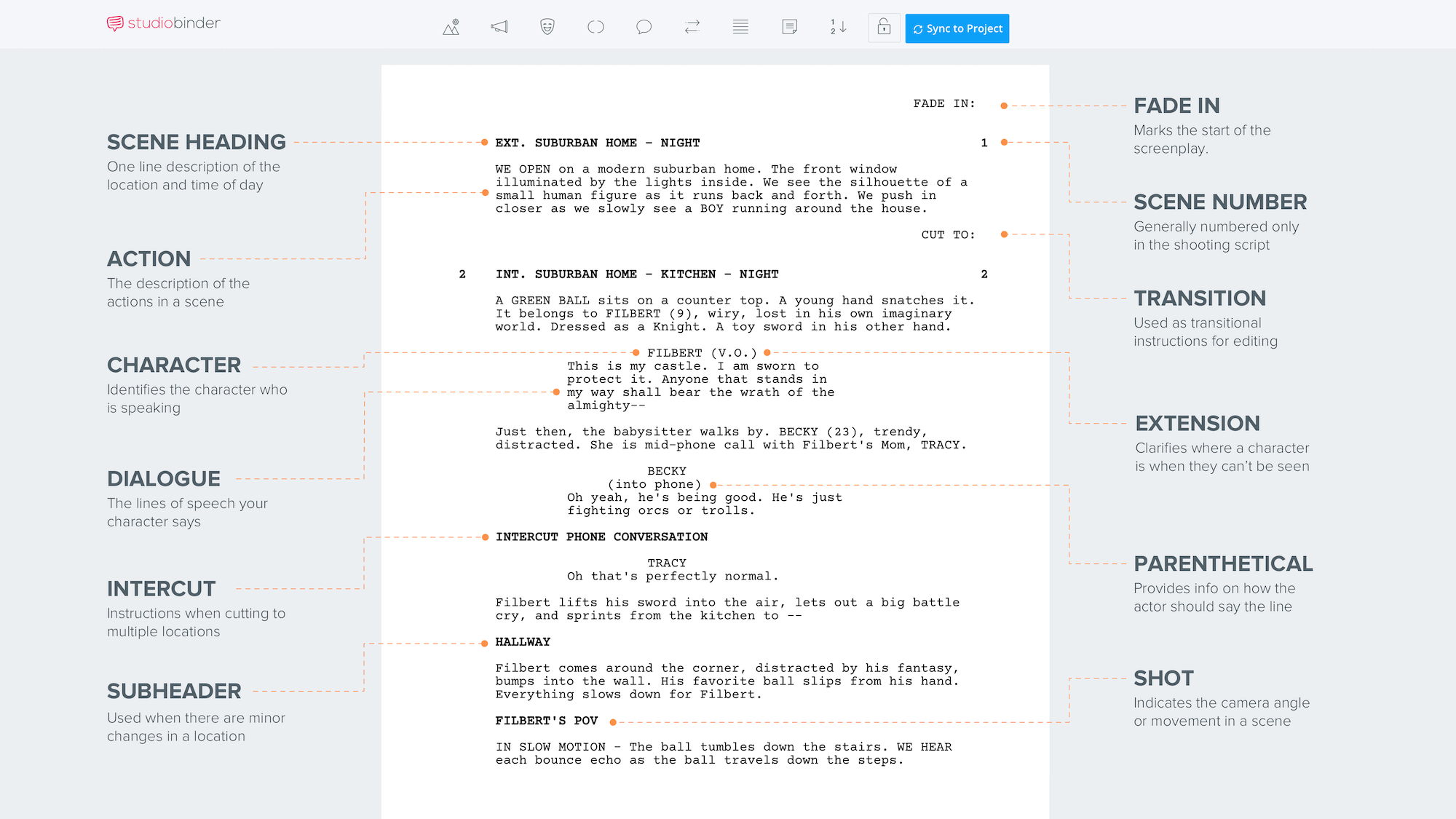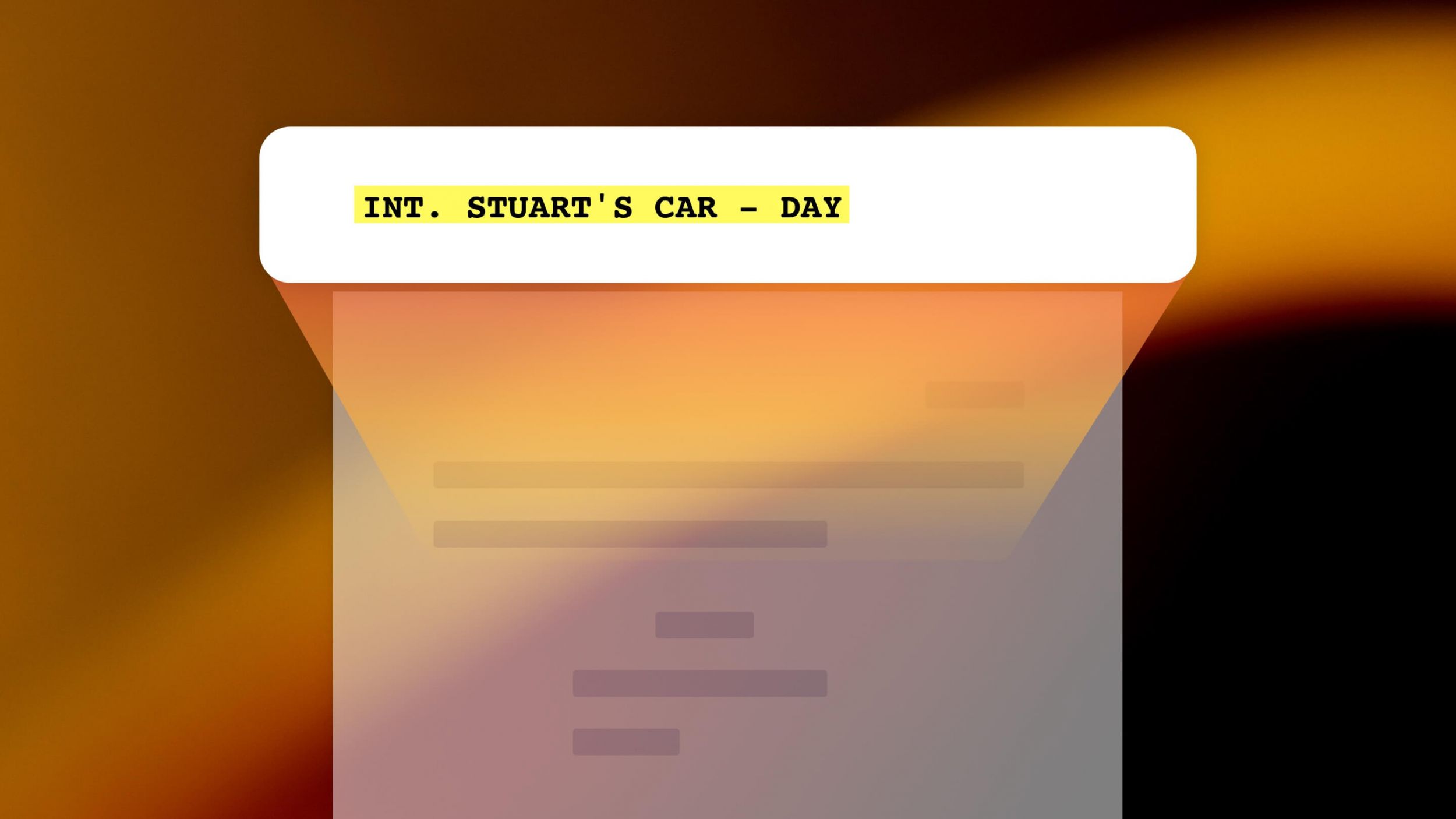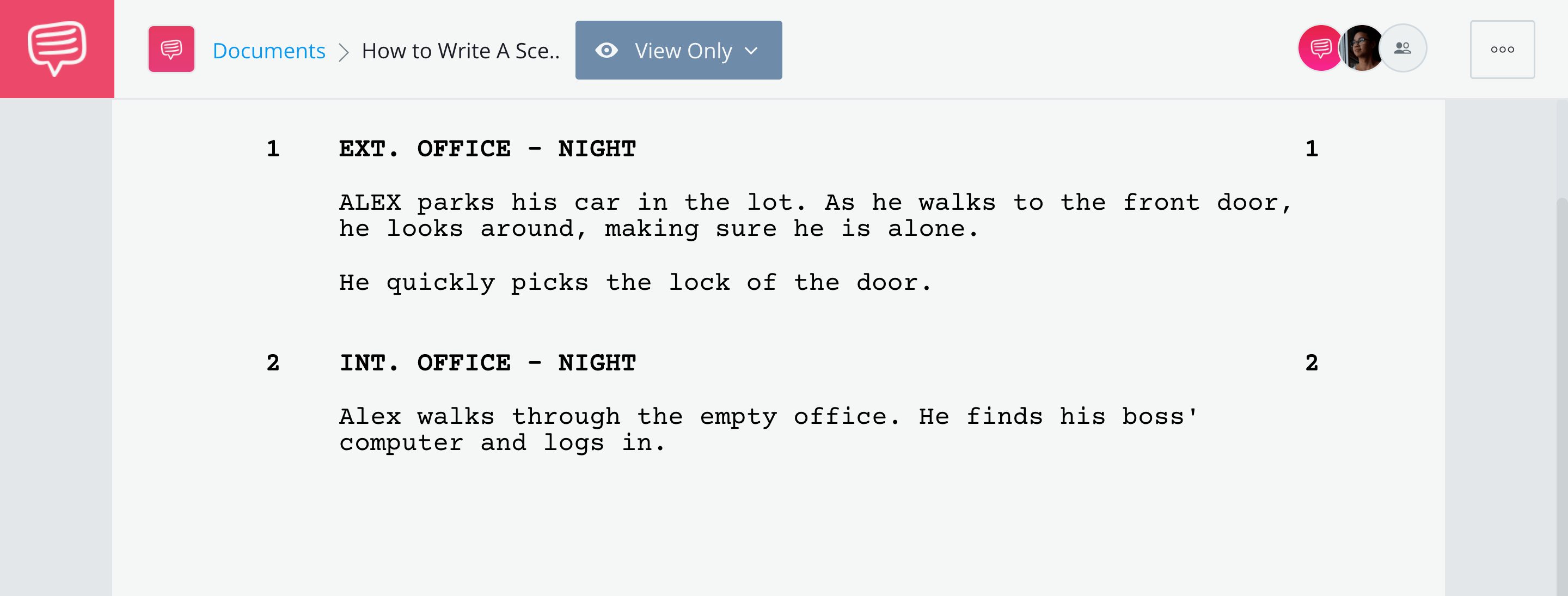When writing a screenplay, it is key to be clear about the story you are telling and what is visually being conveyed. It is also important to be concise and effective with your writing. To execute both of these aspects effectively, it’s important to understand how to write a scene heading in a script.
Watch: How to Format a Screenplay
Scene Heading Screenplay Tutorial
What is a scene heading?
Before diving into the components of how to write a scene heading in a script let’s first establish the difference between a slugline and scene heading. Both slug lines and scene headings are written in all capital letters.
A slug line is a line within a screenplay written in all uppercase letters to draw attention to specific script information. Therefore, a scene heading is a type of slugline. This image gives a quick run-through of proper screenplay formatting.

Script Heading Format
A scene heading primarily consists of three important pieces of information: interior or exterior, location, and the general time of the day.
To analyze these components, let’s break down the properly formatted scene heading example below.

Properly Formatted Scene Heading
Related Posts
For the full scene heading example check out the screenplay example below created in the StudioBinder screenwriting software. Click the image link below to read the full script.
Scene heading example • Read Full Scene
Interior/Exterior Indicator
When writing a scene heading, it is important to first establish whether the scene takes place inside or outside otherwise phrased as “interior” and “exterior.”
The indicator in a scene heading is abbreviated as EXT. and INT. In this scene heading example, the scene takes place inside. Therefore, we begin the scene heading with the abbreviation for interior.

Abbreviation for Interior
Sometimes, a scene can move from an interior location to an exterior location. If the move from exterior to interior (or vice versa) is done in multiple shots, a new scene heading is required.

Move from Exterior to Interior
If the move from exterior to interior is executed in a single, uncut shot, a scene heading can use both indicator abbreviations as seen below.

Single Shot
Location
The next piece of information to include when screenwriting scene heading is the location of the scene. The location of the scene is the setting in which the scene takes place such as a kitchen, restaurant, airplane, or in this scene example, an office.

Location
If the scene moves into a specific location inside the primary location, a secondary scene heading can be used. This is formatted by writing a hyphen, followed by the specific, secondary location.

Secondary Location
General time of day
The final piece of information to include in a scene heading is the general time of day of the scene. This can be morning, dawn, day, afternoon, dusk, or in this example, night.
Location Time of Day
These three key pieces of information should be included in every scene heading in a screenplay. They are vital to establishing a scene before diving into any further detail.
Related Posts
How to Write a Scene Heading in a Script
Don’ts when writing scene headings
A major don’t when writing a scene heading screenplay line is being too specific or descriptive. This is a common problem in both the location and time indicators of the scene.
Don’t describe locations
When establishing a location, description should not be included.
In the scene heading example below, the word “empty” should not be included.

Dont Describe Locations
Descriptions like this should be included in the action description that follows the scene heading. Read more on how write scene description.
Don’t include specific times and dates
Another don’t include information about the time of the scene that is too specific. This can be the specific time of day or the specific date of the scene. This is a common mistake in period piece screenplays.
In the example below, the date “June 1962” should not be included.

Specific Times and Dates
Specific information such as the season, time, or specific date should be included in the action description that follows the scene heading.
Don’t underline or bold a scene heading
Finally, do not underline or bold a scene heading in a screenplay. While it’s necessary to capitalize all letters in a scene heading, bolding or underlining it is not the correct screenplay format.
Related Posts
UP NEXT
How to Write Sluglines
As we mentioned earlier, scene headings are a type of slugline. Sluglines are another important tool when writing screenplays. To learn more about sluglines and how they can be used, check out our next article.

